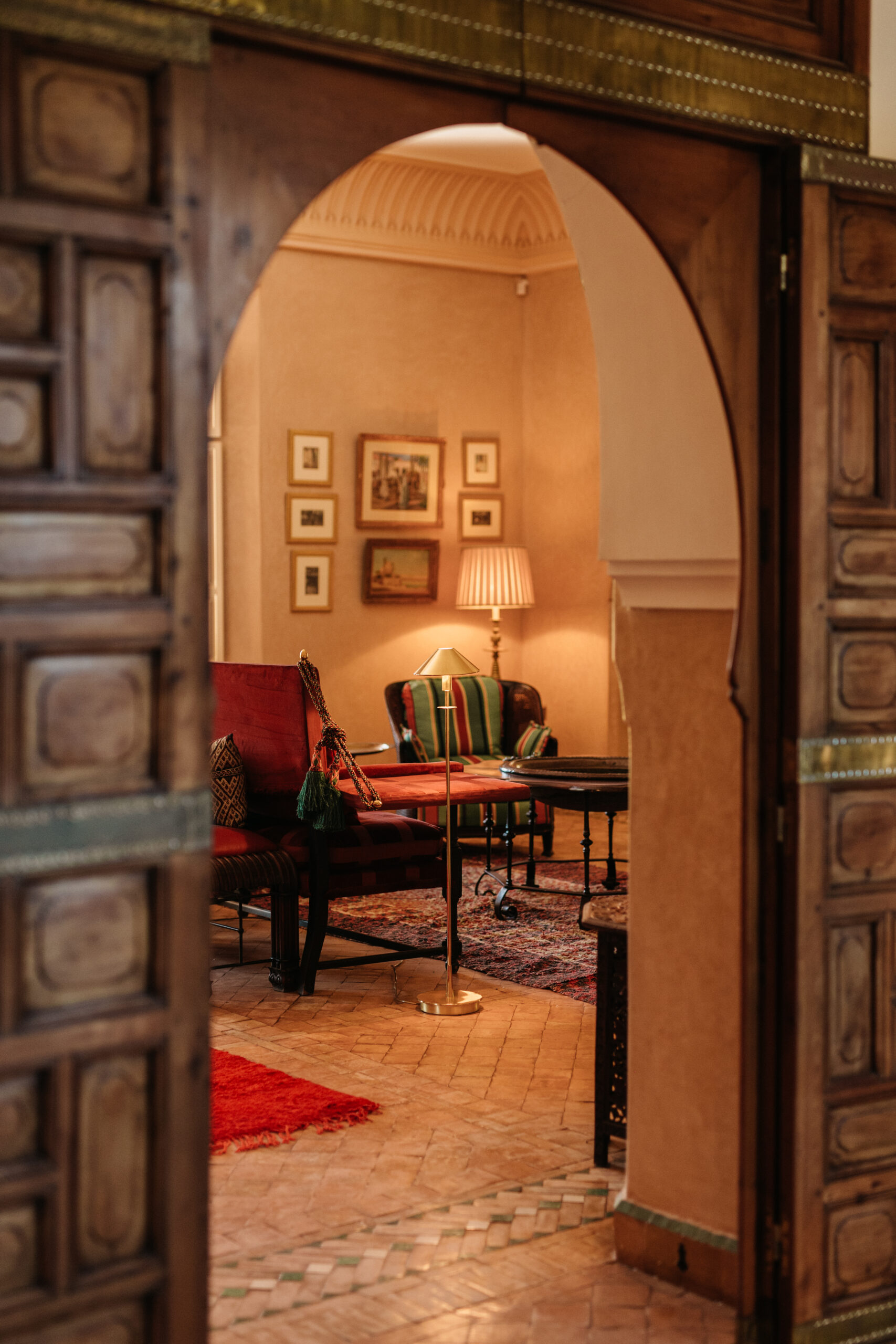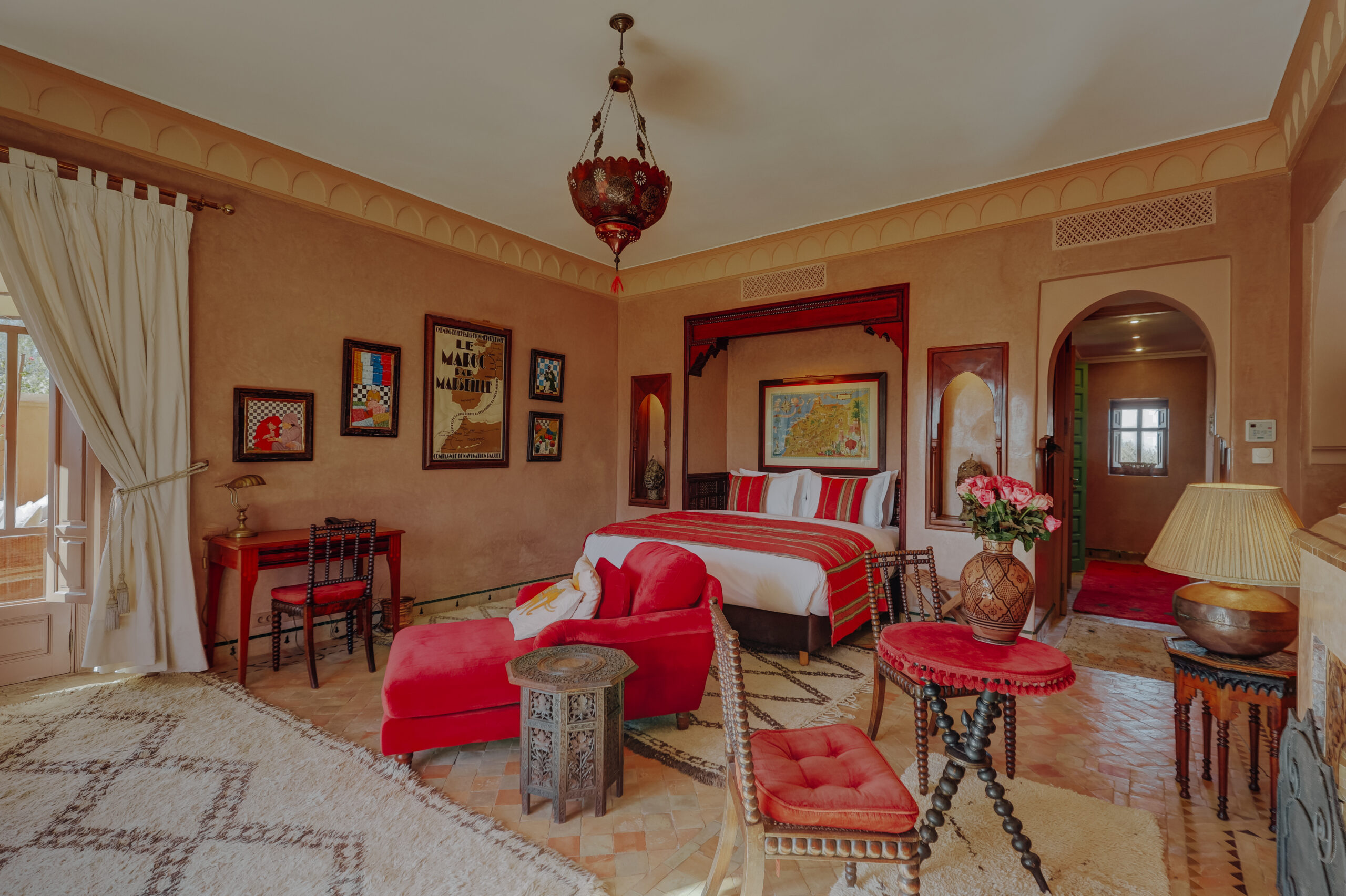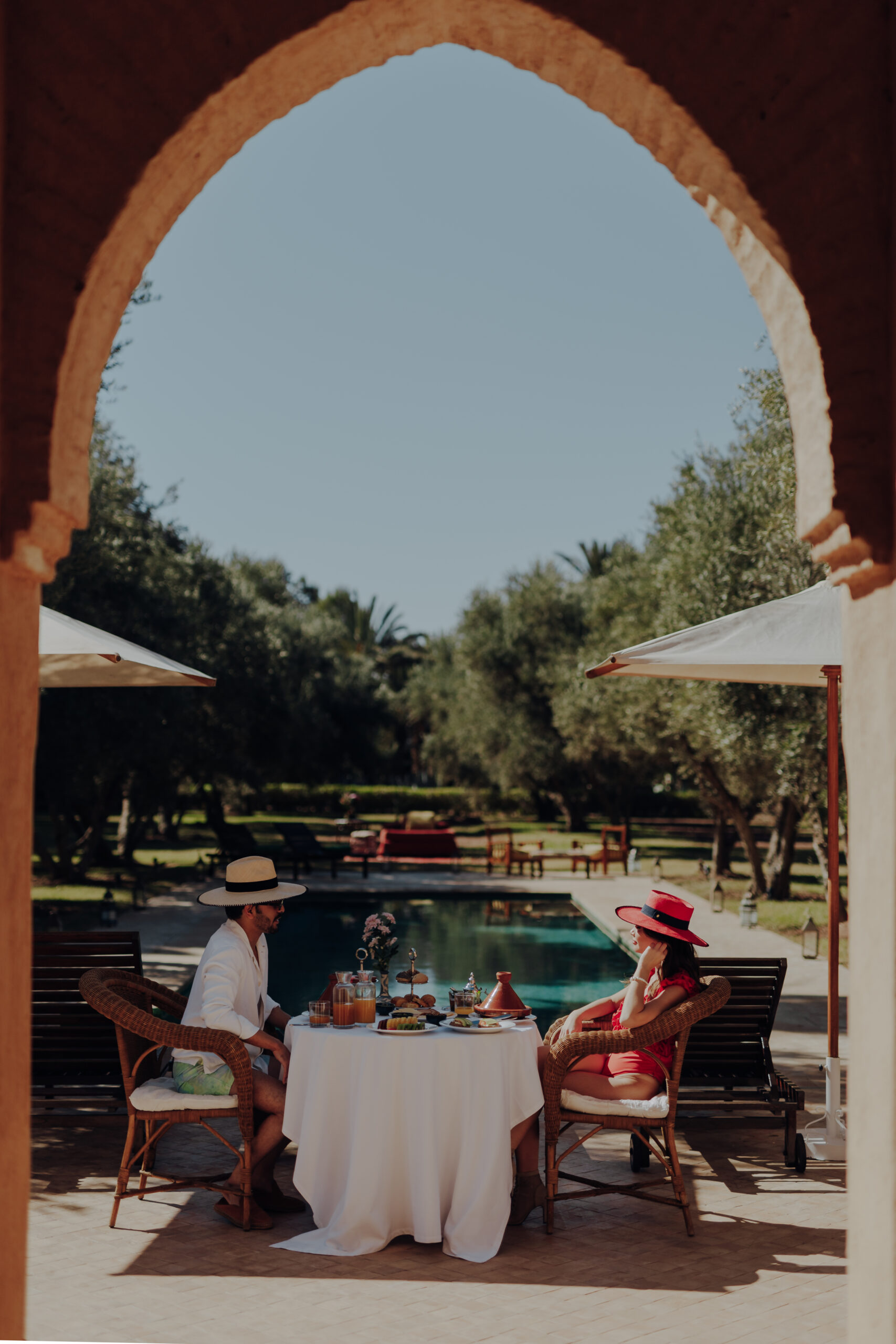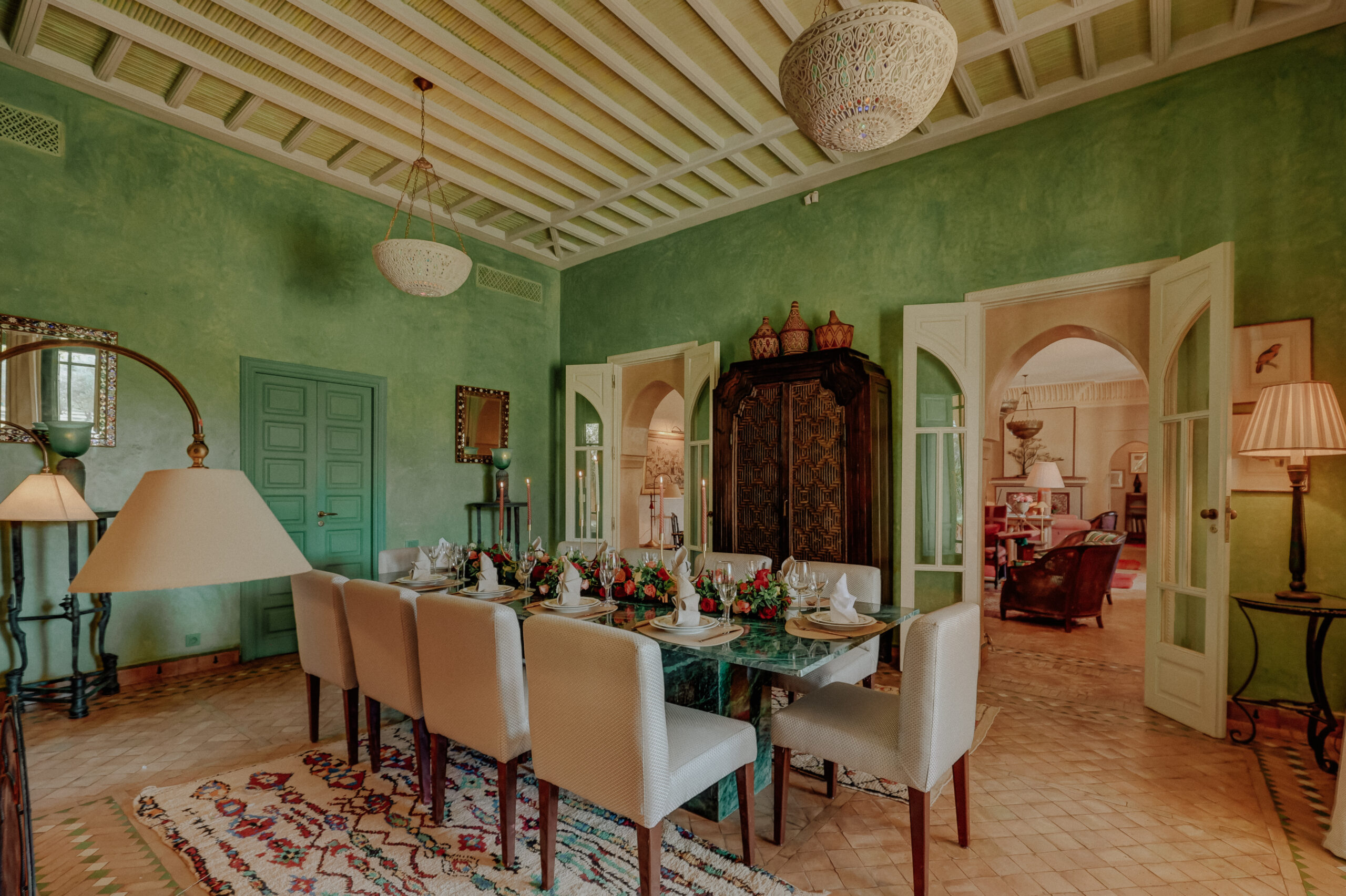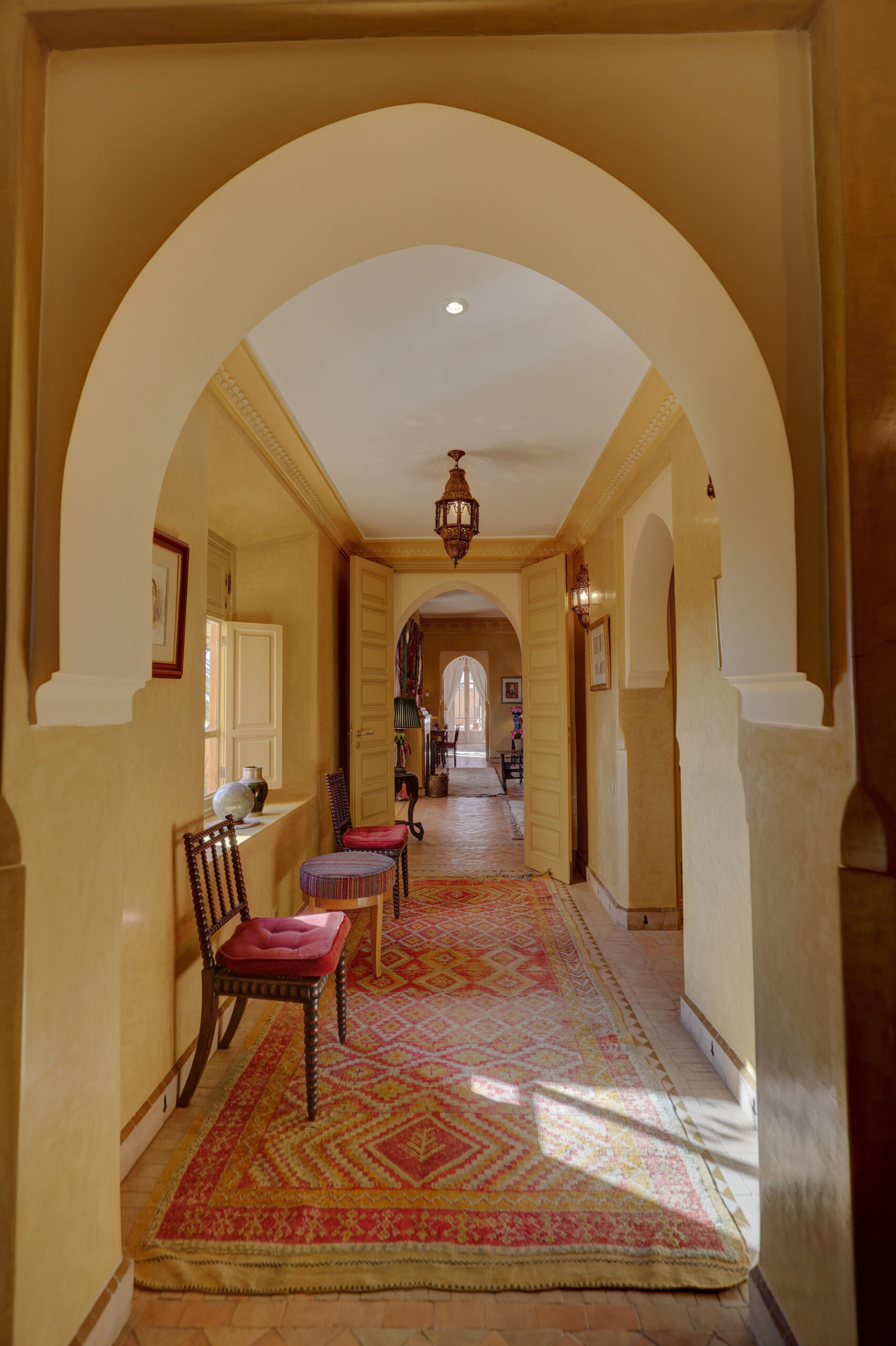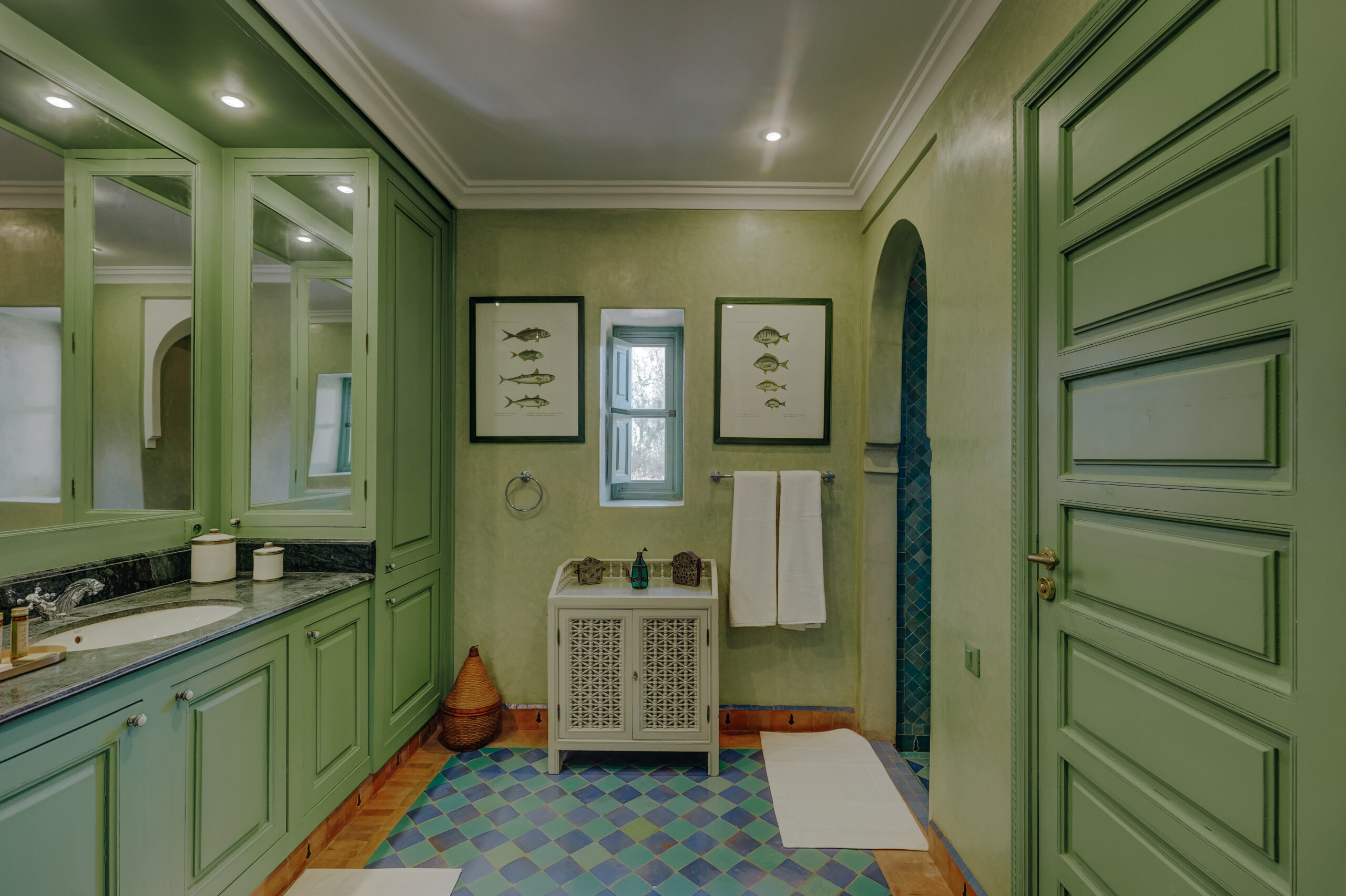There are places you visit for comfort, and there are places you visit for transformation. Casa Memoria, a six-suite sanctuary just outside Marrakech, is firmly in the second category, a home not only of walls and gardens, but of whispers, stories, and an unspoken invitation to slow down and feel.
Rising from the ochre earth along the Amizmiz Road, Casa Memoria takes its name from its very purpose: a house of memory. But this is not memory as nostalgia. It is memory as a living force, a preservation of Morocco’s artistic spirit, crafted into the present by the visionary hands of Moroccan modernist Charles Boccara and legendary interior designer Bill Willis. Together, their influence has shaped a space that feels both ancient and strikingly modern, a home where each stone, curve, and shadow is part of a larger, breathing composition.
Architecture as Storytelling
Casa Memoria is a sculpted poem. Its architecture draws on the grandeur of Moorish palaces, with soaring arches, arcaded facades, and tadelakt-coated walls that catch the shifting Moroccan light in ways that seem almost deliberate, because they are. Light is as much a building material here as stone. In the early morning, it filters softly through latticed windows; at midday, it falls in bold geometric slices across the courtyards; by night, it dances in the glow of lanterns.
Every suite has its own identity, yet they share a cohesive narrative. Four are housed in the main villa, while two sit within a private pavilion surrounded by gardens. Interiors are layered: carved woodwork that tells Berber stories, mid-century curves that nod to Marrakech’s artistic heyday in the 1960s, and custom textiles that feel worn-in yet exquisitely curated. It’s the kind of place where even silence has a texture.
The Art of Immersion
To stay at Casa Memoria is to take part in a cultural performance. Days might begin with mint tea by the zellige-tiled pool, the call to prayer carrying over the olive groves. Afternoons are for losing yourself in the Medina, guided by the villa’s own concierge team to hidden carpet weavers, spice merchants, and artisans whose crafts have survived for generations.
As night falls, the property transforms. In the courtyard, under a vast, starlit sky, dancers in jewel-bright costumes perform fire rituals, a tradition born in the Atlas Mountains, reimagined here as hypnotic, almost dreamlike theatre. The flames reflect off the villa’s walls, casting shadows that seem to breathe with the rhythm of the drums.
A Table as a Stage
Dining at Casa Memoria is not about eating, it’s about witnessing. In a pistachio-hued salon, long tables are set with hand-painted ceramics, brass lanterns, and linen that feels cool to the touch. The menu is a celebration of Morocco’s flavours: smoky zaalouk, chicken pastilla dusted with cinnamon and sugar, fragrant lamb tagine with prunes, and delicate msemen pancakes served with candied fruits. Each dish tells a story of place and season, of hands that kneaded and stirred long before the guests arrived. All put together by the Villa’s own artistic director, Meriem Midra.
A House That Holds the Soul of Marrakech
What makes Casa Memoria so magnetic is its refusal to be just a hotel. It is an artwork, a memory vessel, a place where history is not framed behind glass but lived through textures, tastes, and rituals. Here, days are not measured in hours, but in sensory imprints: the scent of orange blossom drifting through your room at dawn; the warm press of the sun as you walk beneath an arched colonnade; the sound of laughter spilling from the kitchen; the sight of flames spiraling into the dark Moroccan night.

In a city that constantly reinvents itself for the next wave of travelers, Casa Memoria stands apart. It is not trying to be new, nor is it clinging to the past. Instead, it inhabits the rare space in between where heritage and modernity hold hands, where beauty is not a spectacle but an atmosphere. To enter Casa Memoria is to step into a living poem. And once you do, you carry its verses with you, long after you’ve left Marrakech, long after the desert dust has been shaken from your shoes.
